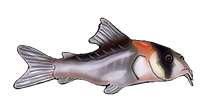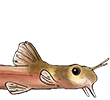Albino Ancistrus Bristle Nose Questions
- ClayT101
- Posts: 357
- Joined: 03 Jan 2003, 23:32
- Location 1: Baton Rouge, LA
- Location 2: USA
- Interests: Plecos, Pro Wrestling, Football (Pro & College)
- Contact:
Albino Ancistrus Bristle Nose Questions
I have a few questions about these. I recently purchased one with the possible hopes of pairing it up later for breeding. Here are my questions:
1) Whats the scientific name/L #?
2) Are all of the albino bristlenoses sold on aquabid the same species? On that note, is there a difference between a bristlenose and a "dwarf" bristlenose?
3) At what age/size do the bristles begin appearing?
Thanks,
Clay
1) Whats the scientific name/L #?
2) Are all of the albino bristlenoses sold on aquabid the same species? On that note, is there a difference between a bristlenose and a "dwarf" bristlenose?
3) At what age/size do the bristles begin appearing?
Thanks,
Clay
- Yann
- Posts: 3617
- Joined: 30 Dec 2002, 20:56
- I've donated: $20.00!
- My articles: 8
- My images: 275
- My cats species list: 81 (i:0, k:0)
- My BLogs: 2 (i:3, p:81)
- Spotted: 109
- Location 1: Switzerland
- Location 2: Switzerland
- Interests: Catfish mainly form South America, Cichlids, Geckos, Horses WWII airplanes, Orchids
Hi Clay!
Well the common albinos has no L# but a wild species that has a yellow colouration and no red eyes has a L# which is L144. But they are clearly 2 distinct fish.
The species under the common albinos Ancistrus is not quite clear. It is probably one of these common Ancistrus species easily found in Pet shop. THey have been Aquarium bred for ages... It is either Ancistrus temmincki or dolichopterus.
Bristles usually appear rather young , usually when the fish is about 4cm/ 1 3/4 inch long.
But if you pick 4-5 of them there is a good chance you will end up with both sex.
Cheers
Yann
Well the common albinos has no L# but a wild species that has a yellow colouration and no red eyes has a L# which is L144. But they are clearly 2 distinct fish.
The species under the common albinos Ancistrus is not quite clear. It is probably one of these common Ancistrus species easily found in Pet shop. THey have been Aquarium bred for ages... It is either Ancistrus temmincki or dolichopterus.
Bristles usually appear rather young , usually when the fish is about 4cm/ 1 3/4 inch long.
But if you pick 4-5 of them there is a good chance you will end up with both sex.
Cheers
Yann
Don't Give Up, Don't Ever Give Up!
- Chrysichthys
- Posts: 1331
- Joined: 09 Jan 2003, 17:22
- My images: 1
- My cats species list: 43 (i:0, k:0)
- Spotted: 1
- Location 1: Oxford U.K.
- Interests: catfish!
- Shane
- Expert
- Posts: 4650
- Joined: 30 Dec 2002, 22:12
- My articles: 69
- My images: 162
- My catfish: 75
- My cats species list: 4 (i:75, k:0)
- My aquaria list: 4 (i:4)
- Spotted: 99
- Location 1: Tysons
- Location 2: Virginia
- Contact:
Caol ila is correct that the common Ancistrus of the hobby are not A. dolichopterus nor A. temmincki. It is possible that A. dolichopterus could show up in Rio Negro shipments, but I doubt it is a "common" fish. A. temmincki probably was a common Ancistrus years ago (1950s and 60s) when there were lots of shipments fron Guayana. The most common Ancistrus in the trade today seems to be A. triradiatus and I believe that some, if not all, of the albinos on the market are A. triradiatus. If someone has an albino I would appreciate meristic data so I can compare it to A. triradiatus.
-Shane
-Shane
"My journey is at an end and the tale is told. The reader who has followed so faithfully and so far, they have the right to ask, what do I bring back? It can be summed up in three words. Concentrate upon Uganda."
Winston Churchill, My African Journey
Winston Churchill, My African Journey




